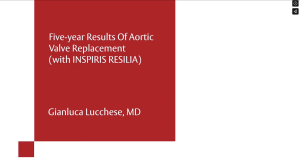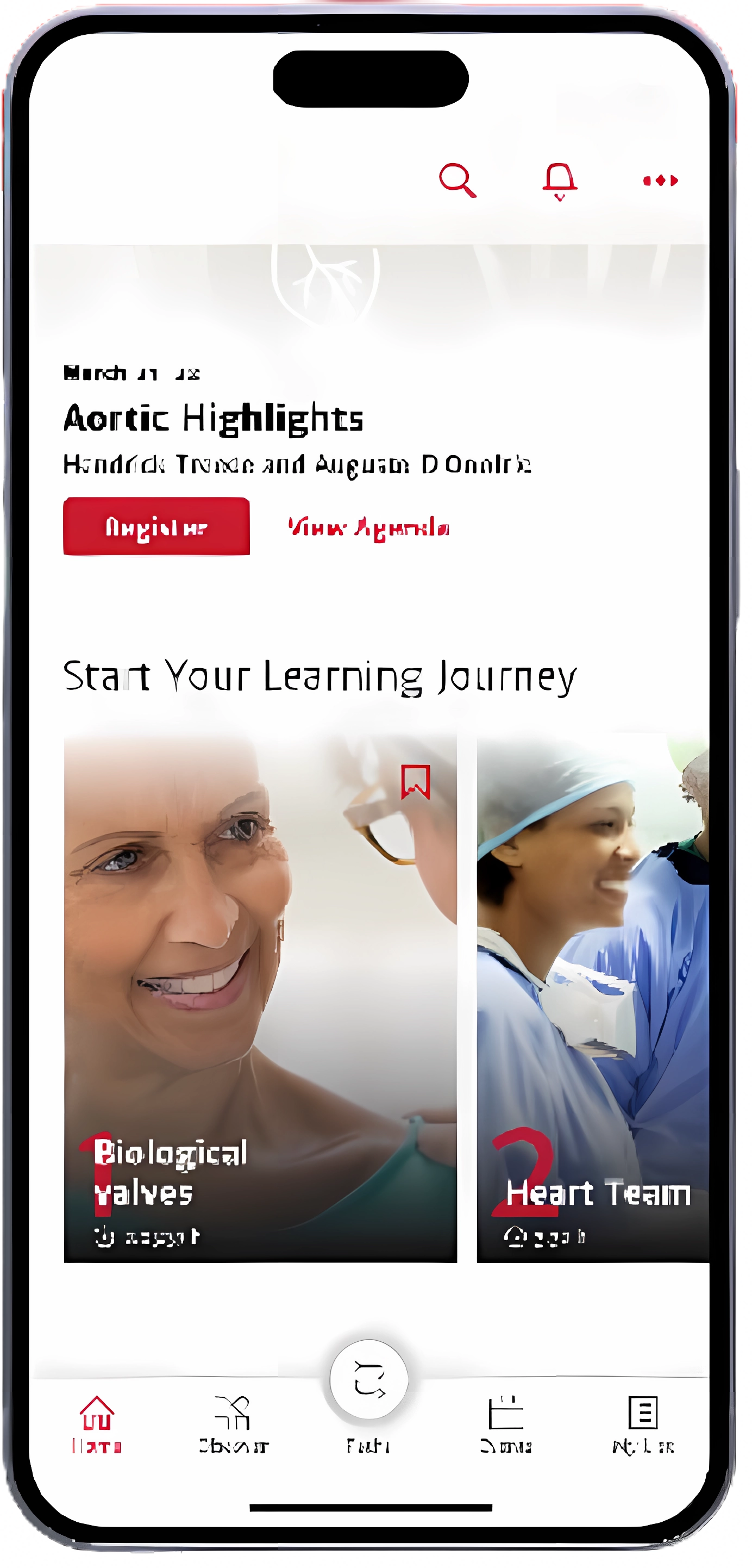COVID-19: Considerations For The Cardiac Team
Introduction
During the ongoing COVID-19 pandemic, it is important for healthcare workers to understand the implications of COVID-19 for the safe provision of cardiac surgery.
Here, Edwards Lifesciences provides a selection of publications that may be of interest to healthcare workers involved in cardiac surgery at this time. The publications highlight key learnings from prior pandemics, techniques that have been used to support patients with respiratory distress and implications for cardiac surgery. For convenience, a short summary of each publication is provided. Please refer to the full publication for detailed information on the techniques used and the outcomes achieved.
We are learning more about COVID-19 every day. Therefore, it is important to acknowledge that insights from previous pandemics might not be directly applicable to the situation we presently face, and that treatment for critical COVID-19 patients may differ from previous pandemics.
Section 1: Cardiac surgery during the COVID-19 pandemic: Recent learnings
Cardiac surgery and the COVID-19 outbreak: What does it mean?
Matt P & Maisano F. PCR Online, March 2020.
Acknowledging that cardiac surgery is not on the front line of patient care in the COVID-19 outbreak, it is important to understand the impact the pandemic may have on cardiac surgery, both for healthcare workers and for their patients. The authors highlight the importance of strategic decision-making by cardiac surgeons in planning essential operations, while also minimising the burden of these procedures on healthcare systems during the pandemic. Surgeons need to assess the risks associated with delaying surgical care against the risks of exposing patients to SARS-CoV-2 within the hospital environment. Additional challenges are also discussed, such as limited ICU beds and ventilation facilities, the consequences of postponing surgeries and the protection of healthcare workers. This article, with its accompanying references and the articles summarised below may prove useful in developing or improving treatment algorithms for currently overwhelmed healthcare systems around the world.
- Zheng YY et al. Nat Rev Cardiol. 2020; Mar 5. https://go.nature.com/2R3huNf
- Adams JG & Walls RM. JAMA 2020; Mar 12. https://bit.ly/3aBGDX1
- Romaguera R et al. REC Interv Cardiol. 2020; Mar 20. https://bit.ly/3aBonNJ
- Ong SWX et al. JAMA 2020; Mar 4. https://bit.ly/3aAe789
Access details about ongoing COVID-19 trials on ClinicalTrials.gov: https://clinicaltrials.gov/ct2/results?cond=COVID-19
Association of coronavirus disease 2019 (COVID-19) with myocardial injury and mortality
Bonow RO et al. JAMA Cardiol. 2020; March 27: e1–3.
In this editorial, Bonow and colleagues discuss the paucity of information regarding risks of COVID-19 for individuals with underlying cardiovascular disease. They highlight the insufficient attention given thus far to understanding the effects of COVID-19 infection in causing or exacerbating cardiovascular injury. The authors discuss early data from several recent publications that aim to help fill this knowledge gap, acknowledging that patients with long-term coronary artery disease and/or those with risk factors for atherosclerotic cardiovascular disease, prevalent in the elderly, have an increased risk of developing acute coronary syndrome upon COVID-19 infections. Such acute infections can place a high demand on myocardial tissue, which would make these patients more susceptible to adverse outcomes and death. Severe inflammatory stress and haemodynamic decompensation result in an increase in circulating cytokines. This can also increase disease severity and mortality risk. This publication highlights many coordinated efforts by the scientific community in understanding the relationship between COVID-19 infection and cardiovascular disease.
Association of cardiac injury with mortality in hospitalized patients with COVID-19 in Wuhan, China
Shi S et al. JAMA Cardiol. 2020; March 25: e1–8.
Presenting data collected during January and February this year from a single hospital in Wuhan, China, Shi and colleagues demonstrate a statistically significant association between cardiac injury and mortality in hospitalised COVID-19 patients. To compare outcomes of patients with and without cardiac injury, the authors analysed clinical, radiological and treatment data. The paper acknowledges that, due to the logistical constraints of collecting data from patients in ICU and isolation, measures of echocardiography, electrocardiography and cytokine levels were lacking. This limits the determination of potential mechanisms of cardiac injury. Another limitation is that, for many patients, clinical endpoints had not been reached as these individuals were still under clinical observation. The authors point to the need for data from larger populations and multiple centres to further understand and manage the outcomes of cardiac injury in COVID-19.
Section 2: Learnings from previous pandemics
The 1918 influenza pandemic: Lessons for 2009 and the future
Morens DM et al. Crit Care Med. 2010; 38: e10–20.
This paper provides a history of the
1918–1919 H1N1 influenza pandemic and discusses whether knowledge of its
characteristics, epidemiology and spread can help us to predict and manage
other respiratory pandemics. The paper explains how, in the case of similar
outbreaks, a strategic combination of pharmaceuticals, technology and treatment
algorithms can identify and/or treat high-risk or severely ill patients. This
strategy may include rapid antigen testing and timely availability of imaging
and laboratory data to allow healthcare workers to assess a patient’s risk of
complications. Mechanical ventilation methods, such as ECMO, are also useful to
support the most severely ill. The 1918 influenza pandemic has provided a
wealth of information, and the authors recommend using this knowledge to
prepare for future pandemics by doing targeted research in prevention,
containment and treatment.
Extracorporeal membrane oxygenation in pandemic flu: Insufficient evidence or worth the effort?
Dalton HJ & MacLaren G. Crit Care Med. 2010; 38: 1484–1485.
During the 2009–2010 H1N1 influenza pandemic, patients with severe influenza required mechanical ventilation to prevent organ failure. In some severely ill patients, early antiviral treatment and intensive care failed in stopping ongoing organ failure and ineffective gas exchange. In these cases, rescue therapies were employed to save lives. Dalton and MacLaren summarise the use of ECMO, one of several rescue therapies employed by clinicians across the world during the pandemic. The authors cite several case series, review articles and a systematic review of the evidence for ECMO use in adult patients. They highlight technological advances that have helped clinicians use ECMO across all patients. The authors also recommend using a framework to coordinate ECMO use by clinicians around the world.
Section 3: Technical manuscripts on the use of ECCO2R and ECMO
Daily use of extracorporeal CO2 removal in a critical care unit: Indications and results
Winiszewski H et al. J Intensive Care 2018; 6: 36.
Highlighting the potential of ECCO2R for patients with ARDS and COPD in critical care settings, the authors of this retrospective study found that ECCO2R was associated with decreased tidal volume and driving pressure in patients with ARDS. ECCO2R use in patients with COPD improved minute ventilation, PaCO2 and pH normalisation. Although the authors recommend caution for potential anticoagulation events, they found that ECCO2R was well-tolerated.
Extracorporeal membrane oxygenation for acute respiratory distress syndrome
Aokage T et al. J Intensive Care 2015; 3: 17.
In this review, the authors discuss the potential of ECMO as a lifesaving therapy for patients with refractory severe respiratory failure or cardiac failure. In recent years, use of ECMO for respiratory failure has been increasing. ECMO may reduce the high mortality rate associated with severe ARDS, with advantages including the stabilisation of gas exchange and haemodynamic compromise, thereby preventing additional hypoxic organ damage. This study highlights the potential benefit of using ECMO in adult patients with ARDS, when adequate oxygenation cannot be maintained using conventional methods. The authors also highlight, however, that ECMO is a complicated and high-risk therapy that can only be administered by adequately trained medical staff.
Feasibility and safety of extracorporeal CO2 removal to enhance protective ventilation in acute respiratory distress syndrome: The SUPERNOVA study
Combes A et al. Intensive Care Med 2019; 45: 592–600.
This study presents results from SUPERNOVA, a prospective Phase 2 trial. The trial assessed the feasibility and safety of ECCO2R to facilitate ultra-protective ventilation in 95 patients with moderate ARDS. In this study, 82% of patients achieved ultra-protective ventilation at 24 hours. ECCO2R was maintained for 3–8 days, with 78% patient survival at day 28. The authors highly recommend a randomised clinical trial to fully assess the risks and benefits of ECCO2R in patients with moderate ARDS. This study demonstrates that ECCO2R is a feasible intervention in moderate ARDS patients, whose potential must be further explored.
Extracorporeal membrane oxygenation in acute respiratory distress syndrome due to influenza A (H1N1) pdm09 pneumonia. A single-center experience during the 2013-2014 season
Menon N et al. Rev Bras Ter Intensiva 2017; 29: 271–278.
This study of 10 patients with severe H1N1-associated ARDS observed favourable outcomes with ECMO intervention. The median age of patients was 40 years. Typically, patients received mechanical ventilation for 22 days and spent 29.1 days in hospital (with 27 days in intensive care). Six patients experienced minor bleeding as a complication. Eight patients survived and were discharged with good functional status. The authors demonstrate that ECMO may result in excellent outcomes by helping a vulnerable but relatively young patient population to achieve good functional status.
Interstitial pneumonia with autoimmune features: An additional risk factor for ARDS?
Grasselli G et al. Ann Intensive Care 2017; 7: 98.
A recently recognised autoimmune syndrome, IPAF is characterised by the presence of interstitial lung disease and autoantibodies, but absence of a specific connective tissue disease or alternative aetiology. In this study, patients with IPAF in the ICU had comparable survival compared to patients with ARDS who had a known risk factor. All patients required prolonged mechanical ventilation ranging from 10 to 88 days (median 49 days), 4 received ECMO and 1 received ECCO2R. The study demonstrates that a diagnosis of IPAF should be considered in any critically ill patient with interstitial lung disease of unknown origin. This diagnosis leads to the interventions recommended, helping these patients achieve survival rates comparable to ARDS patients with a known clinical insult.
Simulation-based training of extracorporeal membrane oxygenation during H1N1 influenza pandemic: The Italian experience
Brazzi L et al. Sim Healthcare 2012; 7: 32–34.
Simulation-based training shows potential for the identification and treatment of complex clinical problems, enabling immediate feedback, remote collaborations and training in a controlled and safe environment. During the 2009 H1N1 outbreak, the Italian health authorities instigated a network of ICU centres in preparation for the treatment of the sickest H1N1 patients by means of ECMO. Two major urgencies were identified: the absolute imperative of having all necessary equipment needed to support the provision of ECMO, and the importance of comprehensive training for all physicians working within the ICU on the correct use of ECMO. Using simulation technology, physicians were upskilled and prepared as demonstrated by the resultant survival data. This paper clearly shows the benefits of simulation-based training for quickly and comprehensively preparing ICU personnel in the use of ECMO.
For professional use.
Edwards Lifesciences, the stylized E logo, are trademarks of Edwards Lifesciences Corporation or its affiliates. All other trademarks or service marks are the property of their respective owners.
© 2020 Edwards Lifesciences Corporation. All rights reserved. PP–EU-0099





 ~5m
~5m












